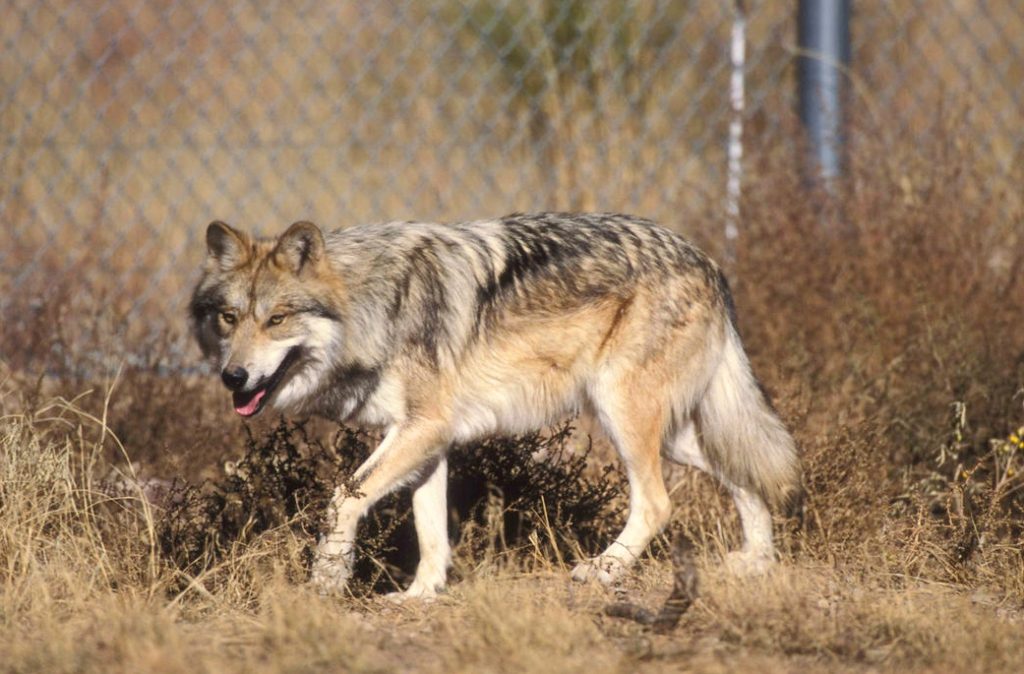The document sets a threshold of 15 wolf packs. Above that number, wolves will be managed like other predators in the state. When the population falls below the threshold, management becomes more conservative, with an eye toward preventing animals from reverting to federal protection.
Eric Barker
Idaho draft wolf plan has predator’s fans, foes howling
A process to update Idaho’s wolf management plan has rekindled the sort of hot emotions scarcely seen since the days the animals were still protected under the Endangered Species Act.
Officials at the Idaho Department of Fish and Game are likely to release a draft of their plan next month, and wolf critics claim the agency is going soft on the animals, while wolf advocates say the state is putting too much pressure on them.
Both sides are upset the agency no longer intends to count wolves the way it has for the past 20 years – with the annual release of a minimum population, pack and breeding pair estimates.
Critics are steamed the new plan is not likely to include an official population goal that matches management objectives that grew out of the state’s 2002 Idaho Wolf Management and Conservation Plan. The document sets a threshold of 15 wolf packs. Above that number, wolves will be managed like other predators in the state. When the population falls below the threshold, management becomes more conservative, with an eye toward preventing animals from reverting to federal protection.
The 2002 plan doesn’t mention a population goal of 150 wolves, but over time it became understood the state would strive to maintain a minimum of 15 packs and 150 animals as a way to prevent the population hitting the threshold of 10 breeding pairs and 100 animals established as a recovery goal when wolves were reintroduced to Idaho in the 1990s.
[wp_ad_camp_1]
Wolf critics want the new plan to adopt the 150 goal and for the state to aggressively manage the animals until it is met. Without the goal, they say wildlife managers won’t keep pressure on the animals.
Butch Suor of Stites acknowledges the wolf population isn’t likely to dip to 150 animals, but he still wants that to be the stated goal.
“We are not even going to be close to that, but the goal still has to be 15 and 150 – period,” he said.
Jim Hagedorn of Viola is accusing wildlife managers of aiming for a higher wolf population so the department can continue to sell wolf tags.
“They don’t want to have any limitations on the number of wolves, and that won’t fly,” he said.
Wolf advocates sounded the alarm last week when the department asked for public comment on a rule change that would allow hunters to use bait such as road-kill deer and elk to lure wolves into shooting range.
“It’s just horrific, the ideas that have come out in terms of how people in Idaho want to manage wolves,” said Suzanne Stone of Defenders of Wildlife at Boise. “They seem to have forgotten about fair chase and any sense of ethics in hunting. Those things seem to go out the door when people talk about wolves.”
Idaho also allows baiting for bears.
At the end of 2015, the state had an estimated minimum wolf population of about 780 wolves. Stone said Idaho may be underestimating the number of wolves killed illegally and thus underestimating the population.
Hagedorn suspects the population is much higher – perhaps 1,500 to 2,000.
Idaho no longer is required to submit an annual wolf report to the federal government, as it was for five years following the animal’s removal from the endangered species list. The state did not release an estimate for wolf numbers at the end of last year. Jim Hayden, the state’s lead wolf manager, said the revised plan is unlikely to call for annual wolf population estimates and will instead aim to keep tabs on population trends through things like harvest information and remote monitoring through a system of game cameras.
Nor is the plan likely to have a population goal. Instead, he said the department’s management goal will be to reduce conflict.
“What we have seen is a decrease in the number of wolves in Idaho,” Hayden said. “We want to make absolutely sure they remain a state animal and are not relisted and manage the population to minimize depredation on livestock and ensure predation on ungulates is not unreasonable, particularly in those areas that ungulates are not meeting management goals.”
Deputy Director Ed Schriever at Boise said monitoring wolves the same way it did during the first five years following delisting would drain resources. Instead, he said the department is managing wolves much like it does black bears and mountain lions.
“It’s a question of prioritization. We would rather utilize those resources to really learn and understand the impacts that wolves might be causing more than an absolute number with a confidence interval around it,” he said. “By knowing what is going on with our deer and elk herds and determining the specific causes of those mortalities, we can know if we have an issue. Just knowing the number of wolves doesn’t let you know what their relative impacts are.”
The Idaho Fish and Game Commission is scheduled to hear from Hayden about wolf management at its meeting in Bonners Ferry July 26-27. Commissioner Dan Blanco of Moscow said he intends to fight for a population goal of 150 to be included in the plan. He said doing so is important to the hunters who recently supported the department’s fee increase legislation.
Free Range Report
[wp_ad_camp_3]
[wp_ad_camp_2]




VOTE AND SHARE—Do you support the Mexican wolf recovery program? ://www.dchieftain.com/…/poll_bc80c0ae-6e29-11e7-bfea..